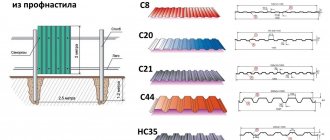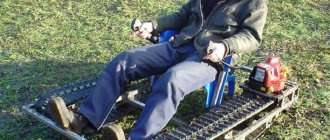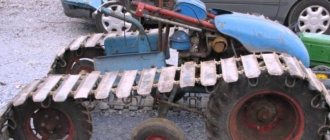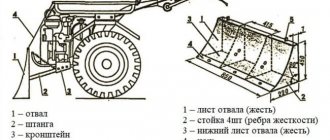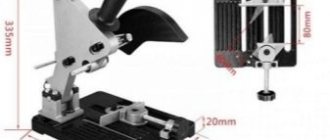Farmers and summer residents know firsthand how much time and effort it takes to work on the land. And when the area of the latter exceeds the traditional 6 acres, then the volume of labor grows exponentially. And here is the time to use the walk-behind tractor.
But what about those who cannot afford to purchase the appropriate unit, and if they can, it is only made in China, which hints at impending breakdowns?
It’s simple - you need to answer the question, how to make a mini walk-behind tractor with your own hands, so as not to buy a less powerful cultivator and not spend a long time cultivating the land?
Walk-behind tractor: purpose
A walk-behind tractor is a mechanized piece of equipment for agricultural work. Depending on the engine type, it is powered by gasoline or diesel.
Compared to a tractor, the walk-behind tractor has small dimensions, which makes it convenient for cultivating small and medium-sized lands (0.1-1.0 hectares).
The nature of processing depends on the attachments of the walk-behind tractor:
- Plow – for plowing the soil;
- Garlic cutter – for sowing garlic;
- Potato digger - for collecting potato tubers;
- Aerator – for crop irrigation;
- Bucket – for removing snow and soil;
- Trailer – for transporting crops and other goods.
The corresponding attachments are included in all drawings of the walk-behind tractor, provided that they are presented by the same manufacturer.
Although there are exceptions - when the attachments fit all models. In any case, thanks to the attachments, the walk-behind tractor becomes a universal assistant on the farm and beyond.
Attachments and additional features
A homemade walk-behind tractor can become an indispensable device, since with its help you can perform various soil cultivation work on your site. The following are often used as attachments for such units:
All these tools are mounted on a special bracket, which is installed behind the engine. Digging up potatoes is done using a special digger, which removes the tubers from the soil without damaging them. If it is necessary to remove mown grass or tops from the area, a rake canopy is used.
With the help of additional equipment, the walk-behind tractor can be used not only for cultivating the soil, but also for cleaning the site. For example, if you attach a bulldozer blade to this unit, you can effectively remove snow. Using a roller with a brush, you can sweep garden paths.
Thus, a self-made walk-behind tractor (as in the photo) can perform many functions and be used to perform almost all work performed on the site. It follows from this that to work on the site it is not necessary to purchase the best walk-behind tractor, since you can create such a structure yourself.
Walk-behind tractor: device
The thematic unit is a wheeled chassis on which an engine with a power of up to 14 hp is placed. The motor is powered by diesel or gasoline to set the chassis speed through the gearbox.
As a result, the user of the walk-behind tractor effortlessly pushes the equipment forward, holding it by the handles. The latter houses the start and speed buttons.
The chassis of the walk-behind tractor consists of two wheel axles with thick tires. In winter, it is better to equip tires with chains so that the unit does not slip on snow and ice.
But for better maneuverability on wet ground, it is recommended to replace axles with tires with metal lugs.
An alternative option is a caterpillar track. But then the question arises: “how to make tracks on a walk-behind tractor with your own hands and what materials and means to use for this?”
To make themed caterpillars, enthusiasts use:
- Conveyor belt and links cut from a profile pipe;
- Split tires from cars and other transport equipment.
Walk-behind tractor: search for power plant
The simple design of the walk-behind tractor allows you to assemble it from scratch, borrowing various parts from donor units.
For example, the following have proven themselves well as a power plant:
- Chainsaw motor;
- Engine from small and medium-sized motorcycles - “Ant”, “Riga”, “IZH”, “Dnepr”;
- Engine from ZAZ, VAZ cars.
The first option produces power that is more akin to a cultivator, and not like a video on how to make a walk-behind tractor with your own hands, where a large unit sets the rhythm for equally large wheels.
Therefore, when choosing a power plant for a future walk-behind tractor, you must be guided by the area that it will have to process.
Engine
When constructing a homemade motor cultivator, some make do with a drive from a scooter or moped. But to assemble a more productive walk-behind tractor, the power of the moped engine will not be enough. It will require a powerful 16-18 horsepower diesel engine from a motorcycle. It is “customized” to the required parameters, but sometimes it needs to be modernized. The gas tank is also installed from a scooter.
First, the cooling system is rebuilt into an active air one in order to improve the technical performance of the motorcycle. This is easy to do using a 12-volt electric motor with a small iron impeller. At the same time, the valve is replaced with a reed valve, which helps facilitate starting, increase traction and reduce fuel consumption.
Walk-behind tractor: search for other spare parts
Borrowing engines from passenger vehicles is convenient because the corresponding equipment may have the necessary gearbox and transmission. Then the enthusiast needs to adjust the wheeled chassis and frame to the “mechanics” and the power plant, and not vice versa, which is much more difficult.
To make wheels that will support a walk-behind tractor, you can use:
- Brake drums;
- Car wheels "Zhiguli".
On the other hand, these tools will be needed to create a frame from a profile pipe and handles from a round pipe, respectively.
In addition to welding seams, pipes can be connected to each other using brackets. However, such fasteners begin to loosen over time. If there is a donor bicycle, then its handlebars can reduce the time for manufacturing the control unit.
Homemade trailer
A trailer can be made in several ways and using different materials. As a rule, homemade structures are made from a metal frame and wood.
Procedure:
- Make a carrier consisting of a drawbar and a rotating body. Connect to the frame so that the hinge is inside the tubular body.
- Make the frame according to pre-drawn drawings from a pipe with a diameter of 60 mm. Sheath it with wood or metal sheet.
- Using a solid metal axle, install car wheels on the structure.
- Assemble a driver's seat from wood.
The tailgate of the trailer is hinged to facilitate loading and unloading. Metal reinforcements are welded on the sides. The trailer is painted and connected to the walk-behind tractor.
Ready walk-behind tractor: prospects for modernization
Each detailed instruction on how to make a walk-behind tractor with your own hands suggests the idea of upgrading the thematic unit until you obtain the following equipment:
- Mini tractor;
- Snowmobile;
- Truck.
When designing the listed transport and agricultural vehicles, it remains to calculate the engine power so that it can cultivate large areas of land or withstand the body of the same truck.
